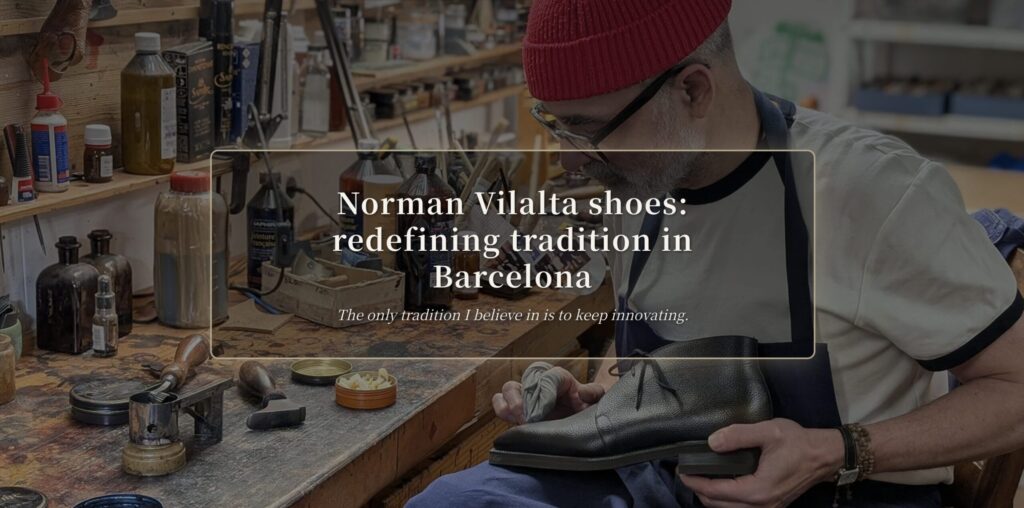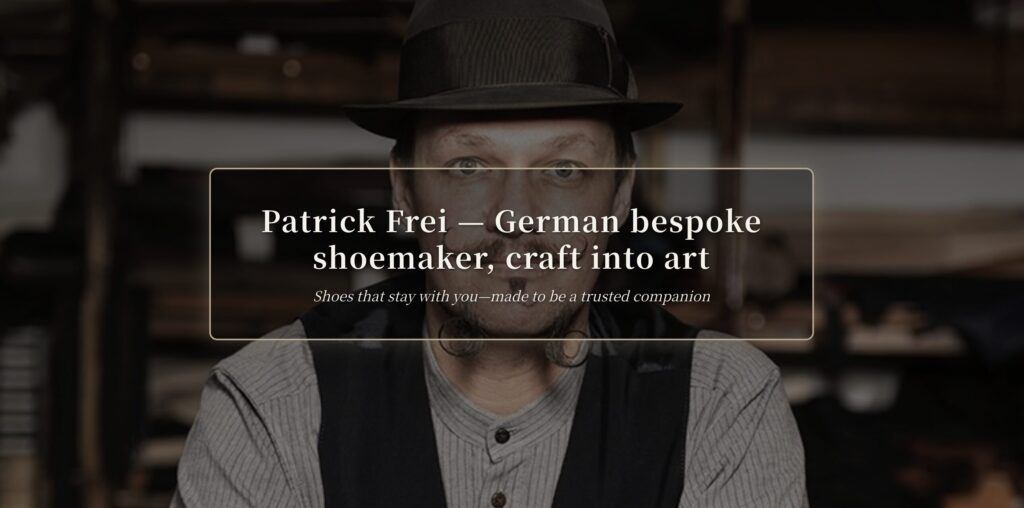Efe Laborde Bootmaker: West End shoemaking reinterpreted
Published /Last updated /Author: Masayuki Kaneko
Photos are used by provision or permission; the text was reviewed by relevant parties.
In London’s bespoke scene, a few venerable houses are dimming while a new generation of independents reinterpret tradition and create fresh value. William Efe Laborde is one of them. Although often described as “self-taught,” his hybrid path—night classes, study under several masters, and deep reading of historical texts—offers rich clues to where craft can go next. Through the five TMG criteria—Craft, Comfort, Care, Cost, and Continuity—this article explores the essence of Efe Laborde Bootmaker, clarifying its appeal and what to watch for.
A self-taught reinterpretation of tradition — strengths beyond the guild system

Conventional wisdom says that inheriting bespoke tradition requires long years as an apprentice. Efe Laborde’s presence reframes that assumption. Unattached to any single workshop, he learned through night classes, mentorships with multiple masters, and extensive study of historical manuals. That unusual background is a strength: by avoiding one house’s “house style,” he surveys the breadth of West End shoemaking and selects methods objectively. In Craft terms, that enables a thoughtful “best of” approach—1930s aesthetics, vintage Jupp tools—without becoming a copy of any legend. It’s a modern way of keeping tradition alive: not a single path, but an informed, living reinterpretation.
“Nothing but the best” — an enduring philosophy from medieval guilds
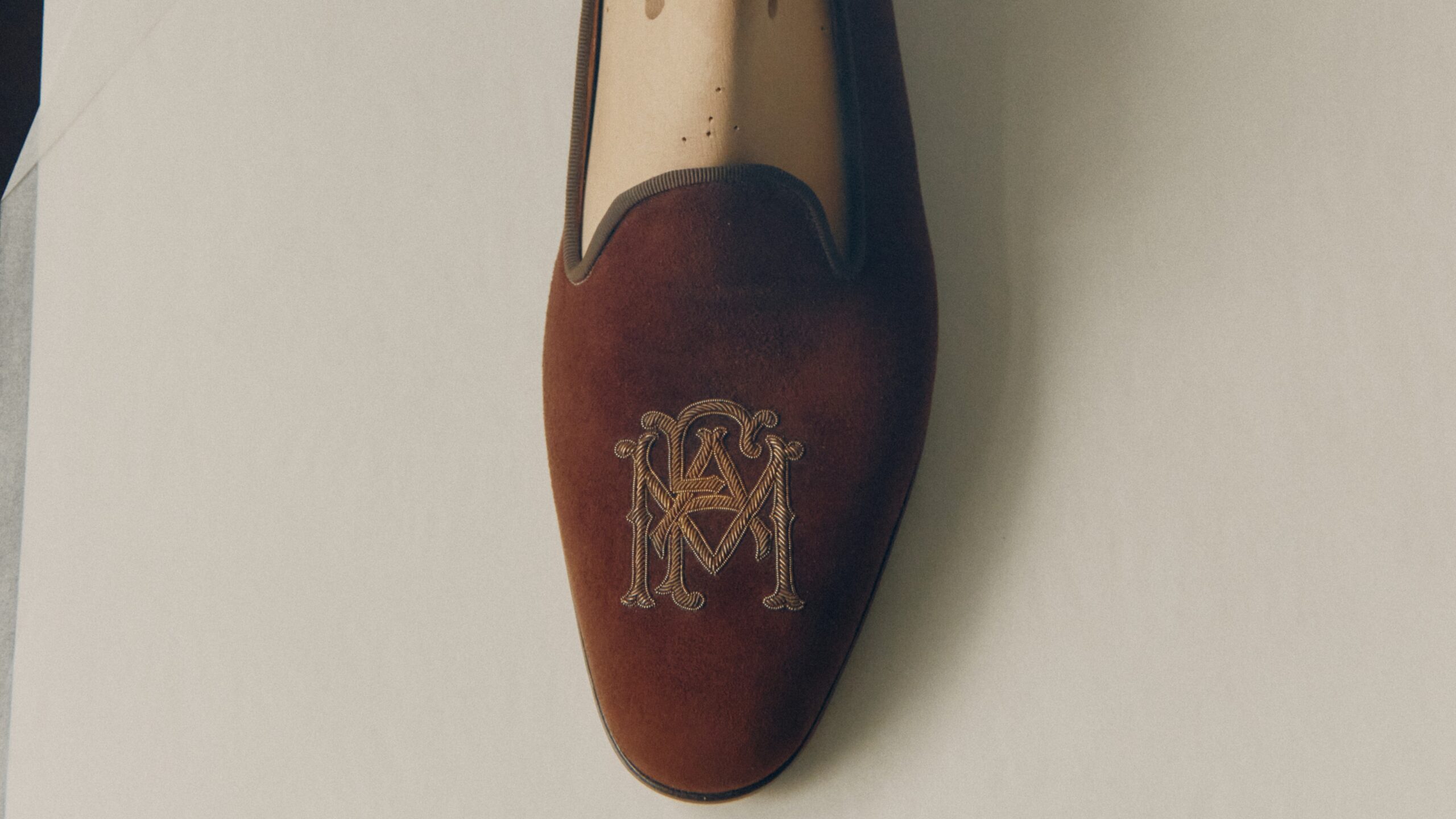
“Nothing but the best” is not a modern slogan. As he explains, it reaches back to London’s medieval guilds and the ethics they maintained. Very tight quality controls, with fines and harsher punishments exercised by the Guilds over the craftsmen in the City from the 1300s, uncompromising standards became incorporated as an essential philosophy to the trades operating in London. In Craft, that translates to top-tier materials—vintage box calf, oak-bark tanned soles—and hand-sewn density up to 16 stitches per inch. But its core shows in Continuity: shoes meant to be repaired and worn for generations. Clients aren’t only buying footwear; they are investing in a value system that outlasts seasons—quality maintained over time.
From rural France to British shoemaker — the path of William Efe Laborde

Efe Laborde’s style grows from an international background. Raised in rural southwest France, he studied anthropology and archaeology at the University of Bristol. That lens—more than “maker,” a student of culture—shapes his work. While employed at a London art dealer, the bespoke shoes worn by upper-crust clients captivated him: when he couldn’t afford them, he chose to make them. Beyond romance, anthropology helps him read the social meanings of shoes—why British and French ideals diverge—and his work fuses French sensibility with British tradition into something singular.
Mentors who shaped him — the craft and ethos of Jason Amesbury
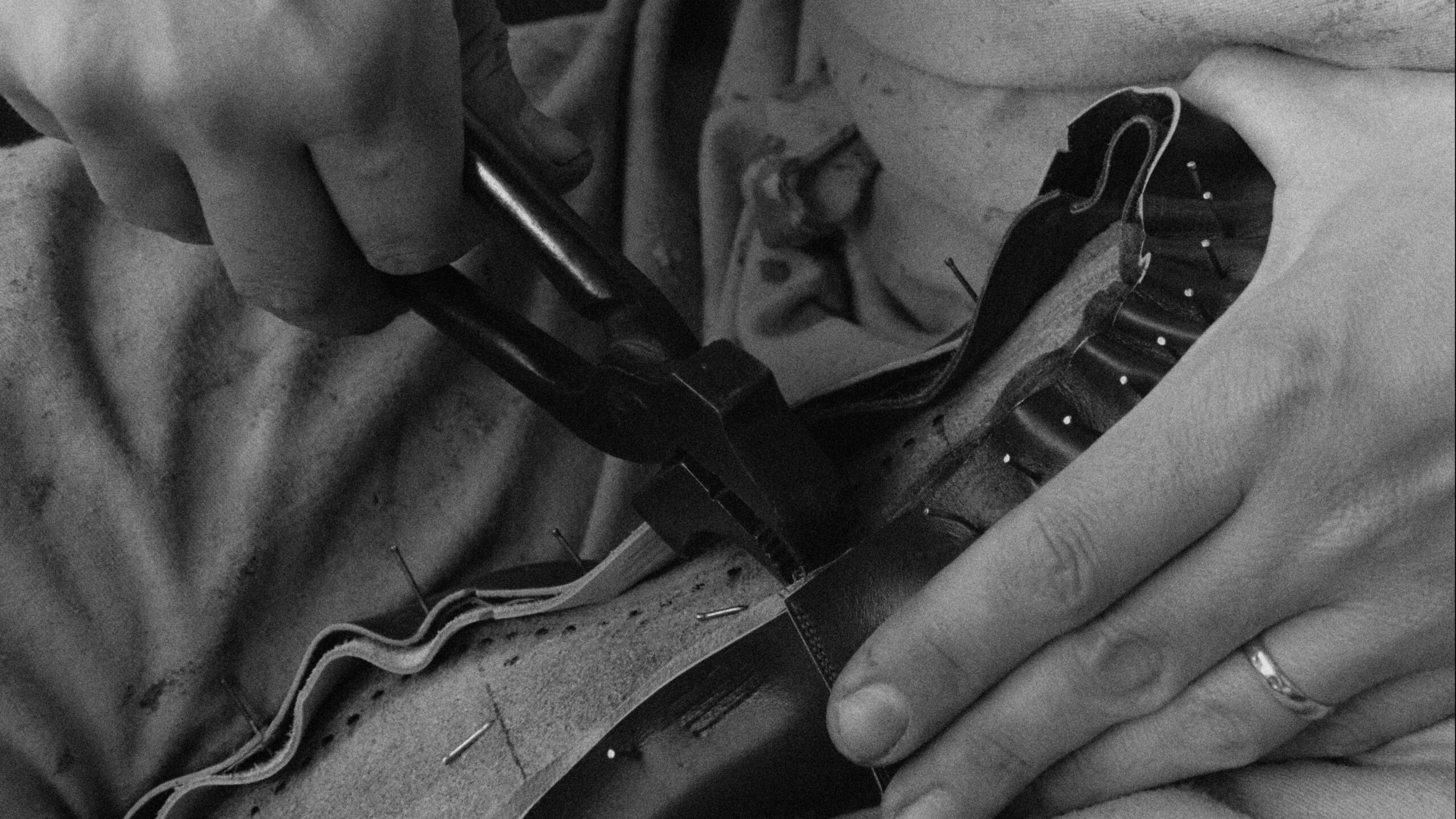
Three mentors are foundational, especially the late Jason Amesbury, a John Lobb (St James’s) alumnus and true master bootmaker across lastmaking, patterning, and both men’s and women’s shoes. Compared with the traditional single-shop apprenticeship, Efe Laborde’s multi-mentor approach trades deep immersion in one house for broader perspective and active synthesis. Revering Amesbury as a daily model while absorbing other philosophies shows him not as a mimic, but as an independent thinker.
Obsession with vintage materials — the era told by Freudenberg calf
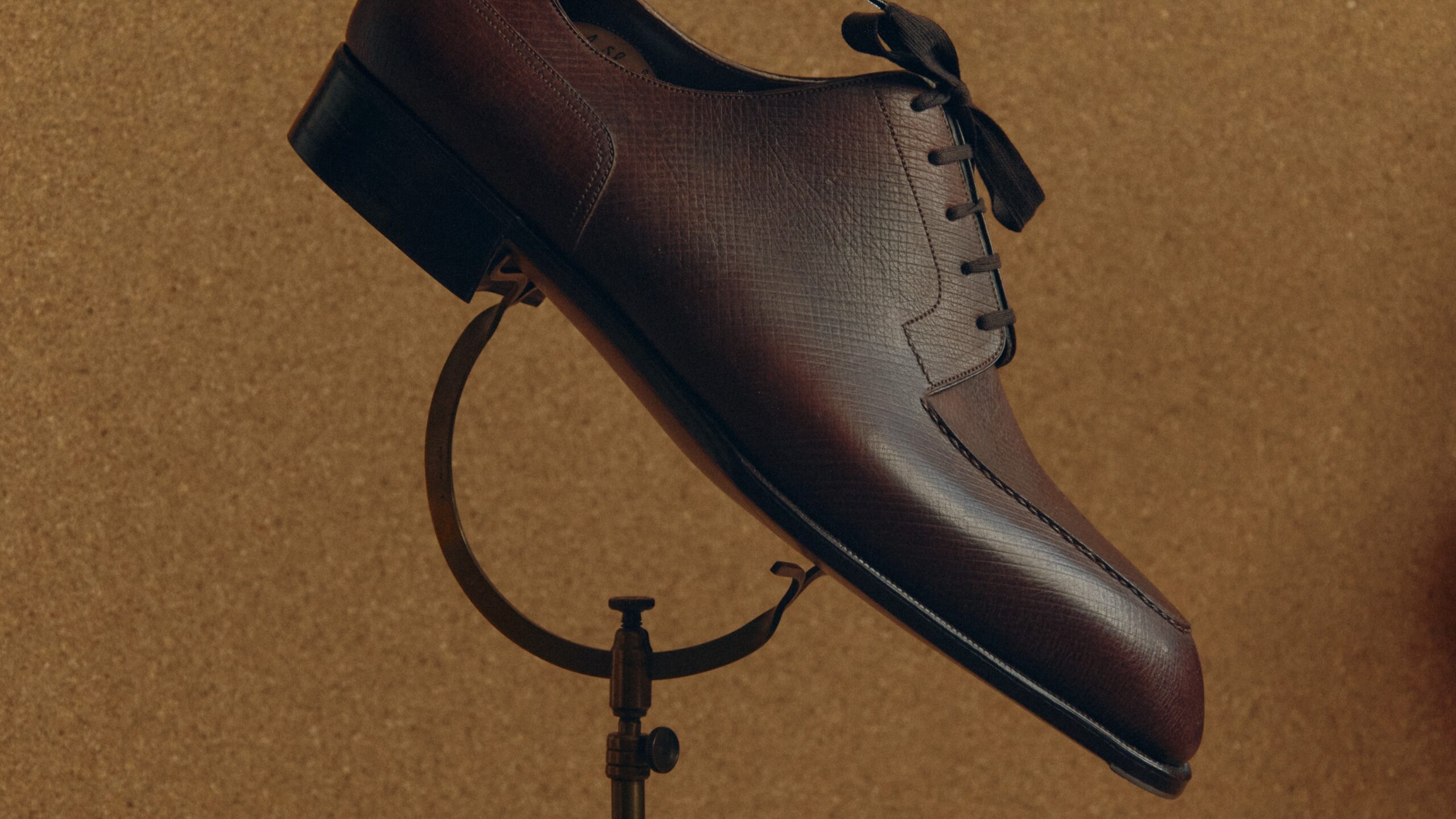
“The finest modern inputs make the finest shoes”—it sounds right, but Efe Laborde’s choices complicate it. He stocks rare vintage leathers, including box calf from Germany’s Freudenberg, not for scarcity alone but for qualities lost in modern efficiency: different tanning and finishing impart a firmer yet fine grain and beautiful aging. Understanding and drawing out those traits is where Craft meets judgment. The tension with Cost is clear: industrial efficiency versus bespoke individuality. Choosing his work means choosing design and fit—and a specific era’s air and respect for methods that risk disappearing.
21st-century shoes with 19th-century tools — restoring and using Jupp tools

His workshop feels like a museum of 19th-century tools, especially English Jupp pieces, which he hunts down, restores, and uses. Unlike modern, efficiency-optimized tools, these act as an extension of the hand, enabling fine control—tight, even hand-sewn pitches and subtle thickness tuning. With a shoemaker great-grandfather in the family, using old tools is also a conversation across time, a felt sense of Continuity. He even built a sideline restoring and selling antique tools, deepening networks and knowledge—evidence that each pair is a crafted artifact, not merely a product.
Bespoke vs MTO — choosing by price and lead time

Efe Laborde Bootmaker offers two routes: full bespoke and MTO (made-to-order). Framed by Cost and experience value, bespoke starts from £4,700 with an 8–10-month timeline; the last is made from scratch, delivering ultimate Comfort and ownership pride. MTO starts from £3,200 with roughly four months’ lead time. With 15 sizes × 4 widths, it’s friendly to remote clients.
Currency conversion not applied.
Practical rule: if you have pronounced fit challenges (very high instep, markedly wide feet, bunions), choose bespoke without hesitation. If your feet are close to standard and you want the house style with a shorter wait and lower price, MTO is a rational choice. Clarify what you value most—perfect fit vs. style and cost performance—to secure satisfaction.
Inside lastmaking — from carving the last to fitting

Comfort lives and dies in lastmaking. At Efe Laborde’s, the process is traditional yet analytical: beyond tape measurements, he combines measuring sticks and profile drafts to grasp the foot in three dimensions—data that guides carving. Errors here cannot be recovered later. A trial fitting pair follows; the client communicates millimetric feedback; the last is corrected. That dialogue is bespoke’s luxury—and the reason an 8–10-month schedule becomes a maturation period where foot and shoe become one.
The value of hand-sewn welted — durability at 16 stitches per inch
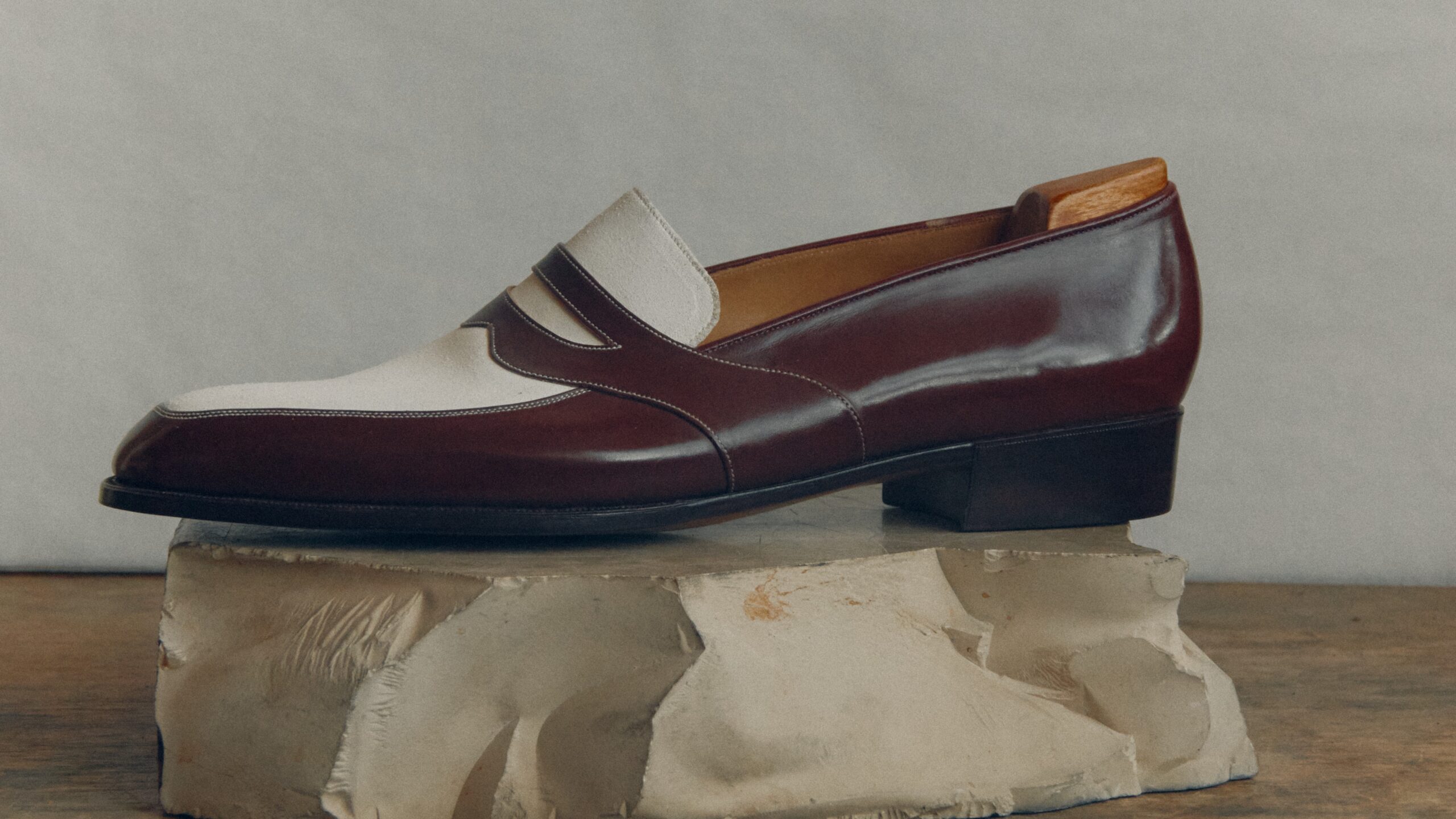
Technically, his signature is fully hand-sewn welted construction. Outsole stitching can reach 16 stitches per inch—beyond a machine’s realm. This is not decorative: it materially increases structural strength for longevity, while also improving Comfort because hand stitches flex with the foot and mold to the owner over time. In Care and Continuity, resoling is straightforward—cut the stitch, replace the sole, and keep wearing the pair for decades. Upfront Cost is high; lifetime value is higher. Quiet resistance to disposability—that is true luxury.
The myth of “self-taught” — a decade of study with three masters

“Self-taught” can mislead: it conjures isolation. In reality, about ten years passed before he worked as a professional, including direct instruction from three seasoned makers. The form differs from a single long apprenticeship, but the essence—transmission from master to student—remains. In Continuity, he learns from several streams and integrates them through his own filter, becoming a legitimate heir. When judging his shoes, look past labels and assess the lineage of technique and the time invested.
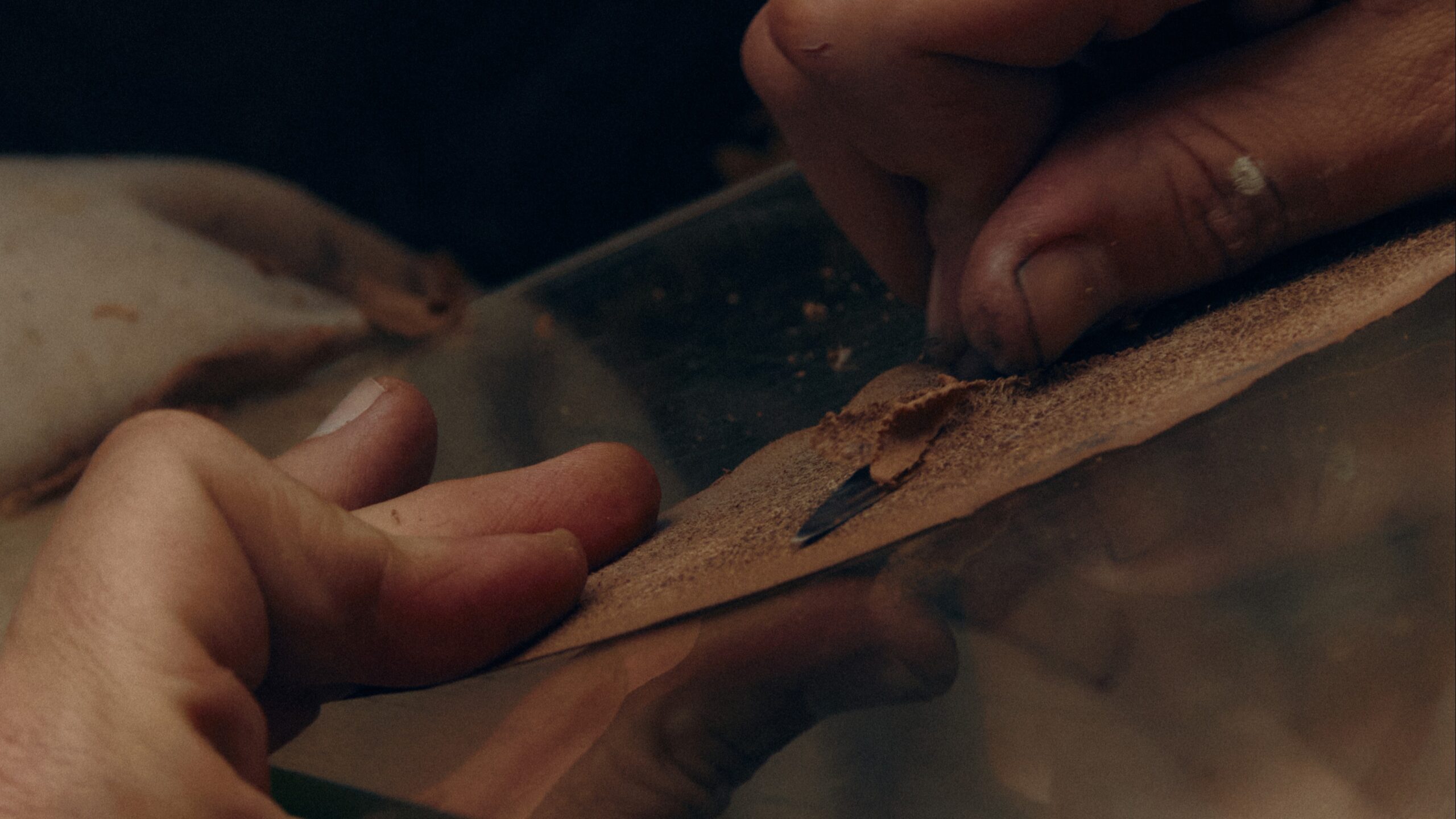
Remote ordering in practice — the promise and limits of MTO
Efe Laborde’s MTO revives the “classical postal order,” opening doors for distant clients. The 15 sizes × 4 widths grid mitigates risk without fittings. Still, MTO cannot fully substitute bespoke: it relies on stock lasts and cannot perfectly address complex asymmetries. If you have bunions, high insteps, or marked left–right differences, expect compromises with MTO. As a vehicle for spreading the style, MTO is excellent; for peak Comfort, visit the London workshop for measurement and fittings. Understand the gap and match it to your expectations.
Between inheritance and innovation — toward the next master bootmaker
Efe Laborde’s path suggests fresh ways to inherit bespoke tradition. His pairs reconcile top-tier Craft with historically rooted Continuity, achieved through a modern approach: multiple mentors and self-directed study, not a single shop’s ladder. Tradition isn’t frozen; it is reinterpreted by passionate individuals. A place on the jury of the World Championships of Shoemaking signals international recognition. The road to “master bootmaker” is not only mastery of technique but transmission—how he will teach and cultivate future makers. That is the point to watch.
Sponsorship Information
“The Makers Guild” is an international community site that shares craft and shoe culture. We are currently welcoming sponsorships from partners who support our mission.
